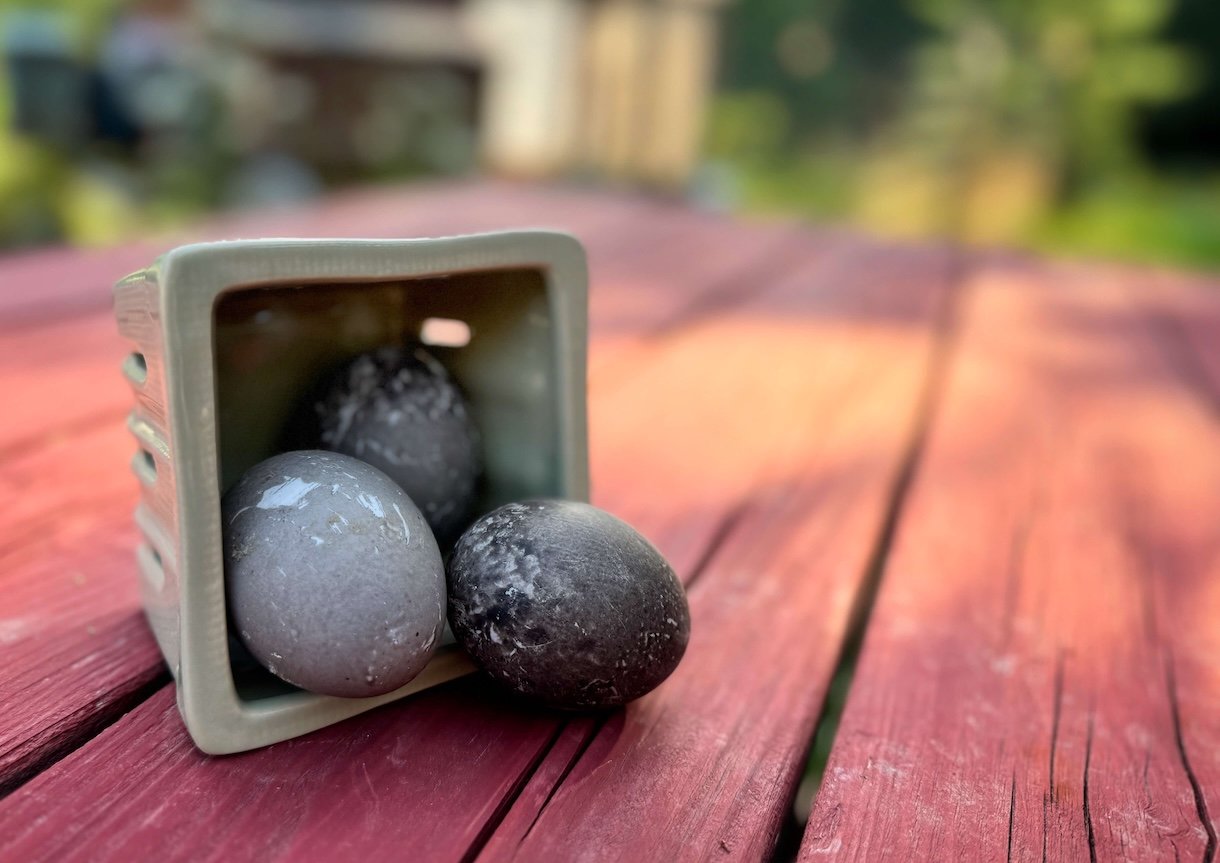Bantam Silkie Ducklings
Origin: United States
Size: 28-38 oz
Egg Size & Color: Medium - Blue
Egg Production: ~100 per year
Hardiness: Cold & Heat
Purpose: Eggs
Personality: Friendly, High Strung
Free Range: No
Rarity: Extremely rare
Orders are for Spring 2025 as Ducks are seasonal layers and won’t begin again until Feb/Mar. 2025 flock is in recovery and due to this the selection is limited and small. Be prepared to wait longer for fulfillment.
Origin: United States
Size: 28-38 oz
Egg Size & Color: Medium - Blue
Egg Production: ~100 per year
Hardiness: Cold & Heat
Purpose: Eggs
Personality: Friendly, High Strung
Free Range: No
Rarity: Extremely rare
Orders are for Spring 2025 as Ducks are seasonal layers and won’t begin again until Feb/Mar. 2025 flock is in recovery and due to this the selection is limited and small. Be prepared to wait longer for fulfillment.
Origin: United States
Size: 28-38 oz
Egg Size & Color: Medium - Blue
Egg Production: ~100 per year
Hardiness: Cold & Heat
Purpose: Eggs
Personality: Friendly, High Strung
Free Range: No
Rarity: Extremely rare
Orders are for Spring 2025 as Ducks are seasonal layers and won’t begin again until Feb/Mar. 2025 flock is in recovery and due to this the selection is limited and small. Be prepared to wait longer for fulfillment.
-
These pint-sized cuties resemble Call Ducks in both size and personality but have some unique characteristics all their own. Silkie ducks are a delightful miniature breed known for their distinctive voices, playful nature, and most importantly, their unique feathering. Highly social and brimming with personality, they are a fantastic choice for small farms, backyard enthusiasts, and hobby breeders alike. Though smaller than most domestic duck breeds, Silkie ducks make wonderful little foragers in gardens or orchards!
Silkie ducks are gentle and curious birds with a bit of a flighty nature. But, if space is limited, they have a small footprint and adapt well to smaller environments. They’re relatively easy to care for, adjusting happily to a variety of settings, and can live harmoniously with other poultry or shine as the main attraction in a backyard pond.Bantam Silkie Ducks come in several colors, including black, snowy, dusky, white, and shades similar to Call Ducks. Currently, we have black, blue-bibbed, black-bibbed, chocolate, wild, and dusky varieties available. Although they’re not prolific egg layers, Silkie duck eggs are perfect for a small omelet or snack. Their eggs are green-blue, similar to Cayuga duck eggs, and are medium-sized — larger than a chicken egg but smaller than a standard duck egg.
Silkie ducks generally weigh between 30-38 ounces (around 2 pounds), slightly smaller than a Mallard. As a rare breed with limited breeders, weights can vary as more work is done to stabilize their characteristics. They require proper housing, feed, fresh, clean water, and secure predator protection.
Though they can be flighty and a bit high-strung, with patience and regular handling, they can become friendly and even tame. They also tend to stay tidy if their pen is well-maintained with plenty of space and shade.The silky feather trait in ducks is controlled by an allele known as "Si." This trait is autosomal and recessive, meaning a duck must have two copies of the silky gene (homozygous: SiSi) to exhibit silky plumage. Ducks with only one copy of the gene (heterozygous: Si+Si) will have normal feathers, though they carry the silky gene and can pass it to their offspring. If a heterozygous bird (Si+Si) mates with another heterozygous or homozygous silky bird (SiSi), there is a chance that some offspring will express the silky feathering trait. This is why it's common to receive both silky and smooth-feathered birds in our breeding program. The mutation that causes their unique feathering also results in a thicker shell and outer membrane of their eggs, making hatching difficult for homozygous birds. Therefore, it is necessary to retain heterozygous birds in the breed to avoid this issue.
We need more breeders and hobbyists to help preserve these very rare ducks and their unique qualities. Although they are not currently recognized by the American Poultry Association, they can be shown at most poultry shows. We would love to see more stewards of this breed participating in these events. -
We recommend starting with our Chicken & Waterfowl Starter for the first 3 weeks, then duck and gosling grower till laying age. At laying age geese use adult layer. Our feed includes grit and oregano oil for gut health. Fresh clean water needs to be available, grit to break down the feed and greens if not using Sugar Feather Farm feed and Oregano Oil in the water daily to help with gut health. Geese can start to get grasses at 2 weeks with some other veggies.
-
These birds fly! As ducklings they are more delicate than standard breed ducks, keep on heat longer and feed starter feed a little longer.
-
Bantam Silkie Ducks were first developed by Darrell Sheraw, an English professor from Pennsylvania with a deep passion for waterfowl. Known for creating several unique Call Duck colors, Sheraw even incorporated Call Ducks in the development of the Silkie Duck. According to Sheraw, his original Silkie ducks emerged unexpectedly from a combination of white and snowy Mallards in the 1980s.
From there, renowned waterfowl breeder Dave Holderread contributed to developing additional color varieties. In 2019, Holderread dispersed his stock, leading to the breed’s spread to a small group of dedicated breeders. Today, only a handful of enthusiasts are actively working to preserve and further develop these charming and unique ducks.





















